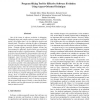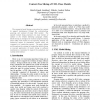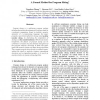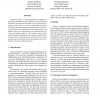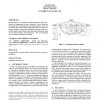IWPSE
2003
IEEE
14 years 11 months ago
2003
IEEE
One of the issues in software evolution is debugging. Debugging large and complex software systems evolved requires a lot of effort since it is very difficult to localize and ide...
ESOP
2005
Springer
15 years 1 days ago
2005
Springer
Program slicing is a well-known methodology that aims at identifying the program statements that (potentially) affect the values computed at some point of interest. Within imperat...
ICSM
2005
IEEE
15 years 3 days ago
2005
IEEE
In the work presented here, we introduce a method to automatically generate a subset of a UML class model based on a user-defined criterion. The goal of this work is to allow us to...
ASWEC
2005
IEEE
15 years 4 days ago
2005
IEEE
Program slicing is a well-known program analysis technique that extracts the elements of a program related to a particular computation. Based on modular monadic semantics of a pro...
SCAM
2006
IEEE
15 years 15 days ago
2006
IEEE
Traditional program slicing requires two parameters: a program location and a variable, or perhaps a set of variables, of interest. Stop-list slicing adds a third parameter to the...
SCAM
2007
IEEE
15 years 23 days ago
2007
IEEE
Program slicing is a program-reduction technique for extracting statements that may influence other statements. While there exist efficient algorithms to slice sequential progra...
ISSTA
2009
ACM
15 years 1 months ago
2009
ACM
Traditional dynamic program slicing techniques are code-centric, meaning dependences are introduced between executed statement instances, which gives rise to various problems such...
FASE
2009
Springer
15 years 1 months ago
2009
Springer
Abstract. Though there has been nearly three decades of work on program slicing, there has been comparatively little work on slicing for state machines. One of the primary challeng...
SIGSOFT
2003
ACM
15 years 7 months ago
2003
ACM
Program slicing is a technique to identify statements that may influence the computations at other statements. Precise slicing has been shown to be undecidable for concurrent prog...
